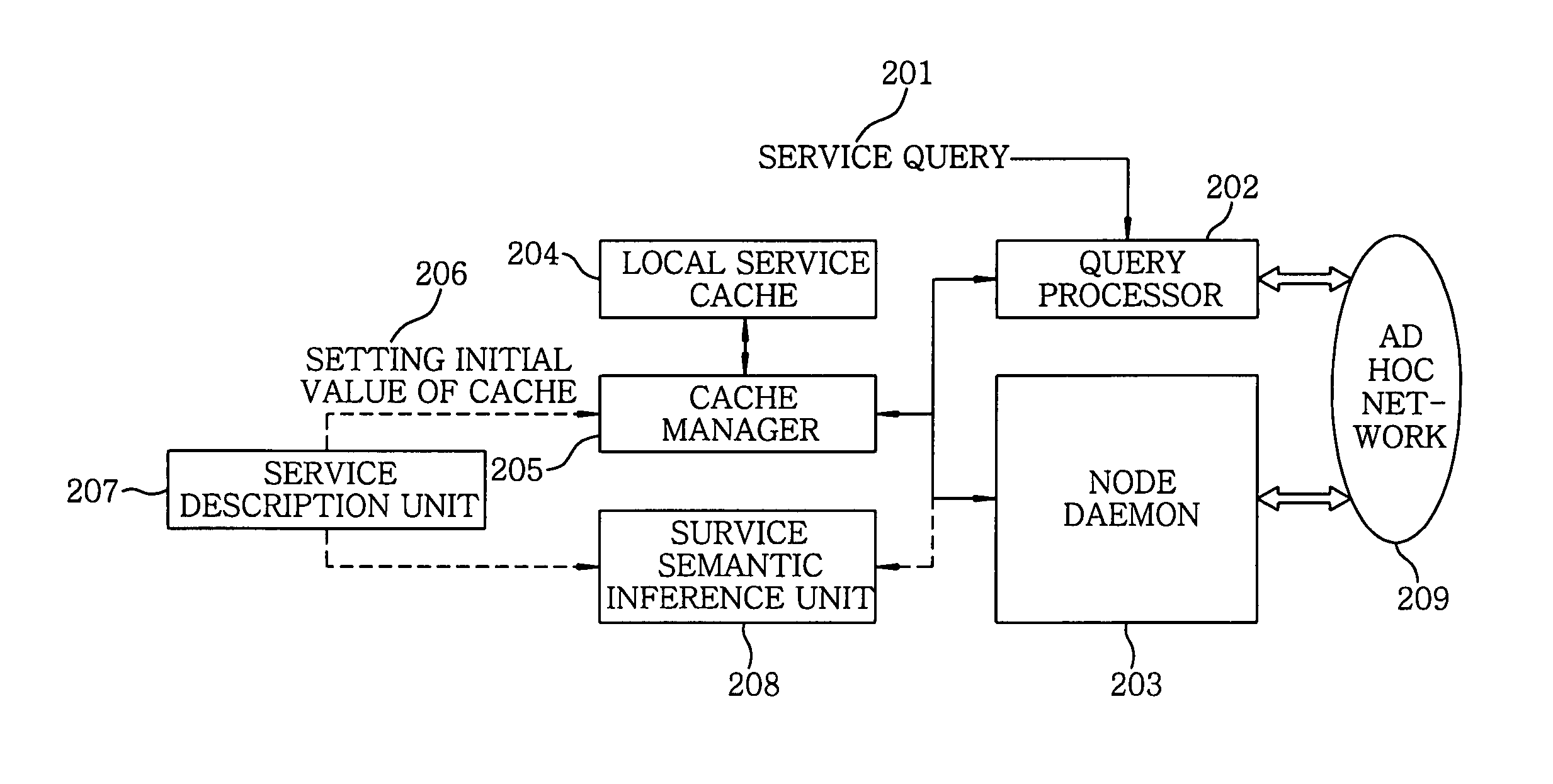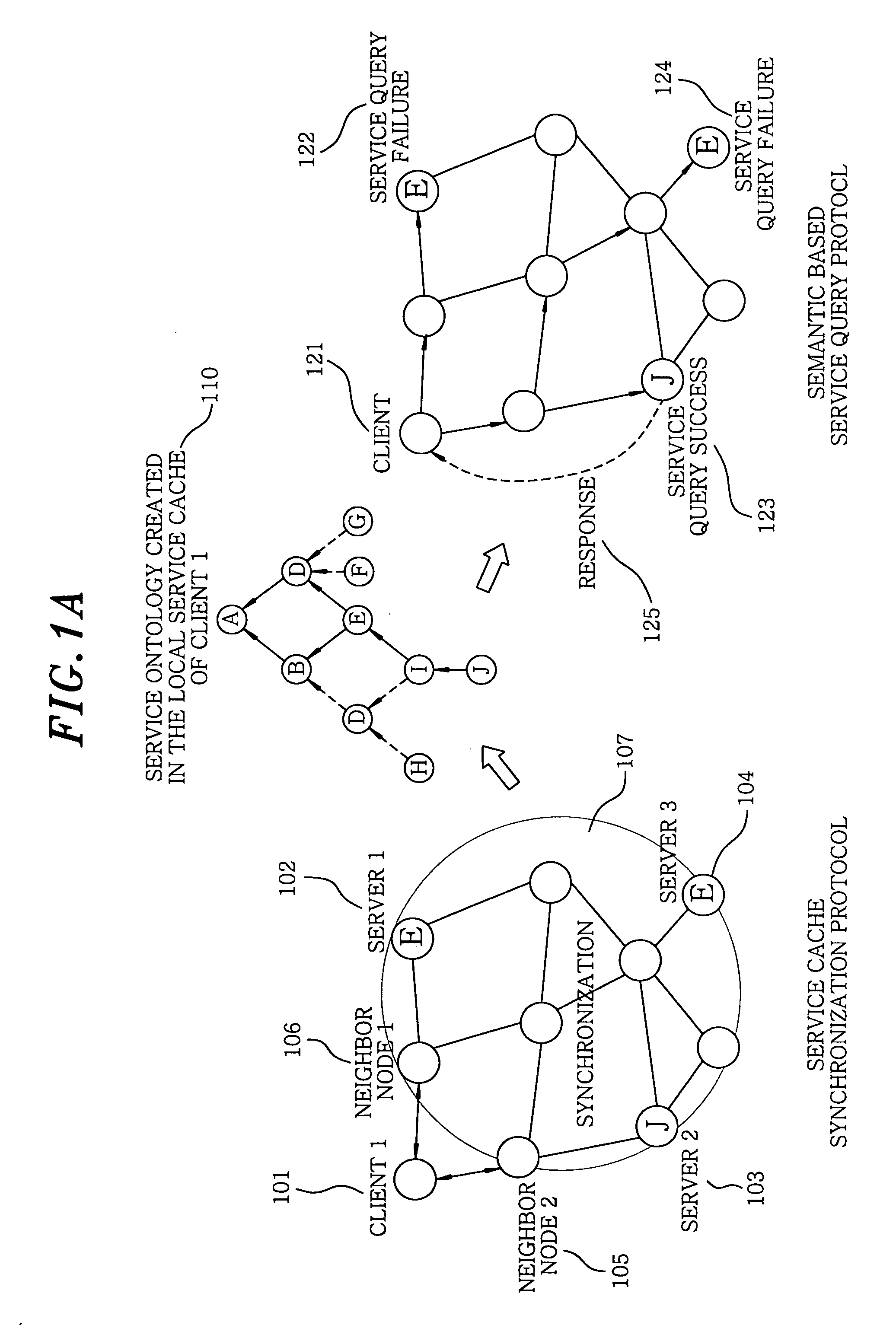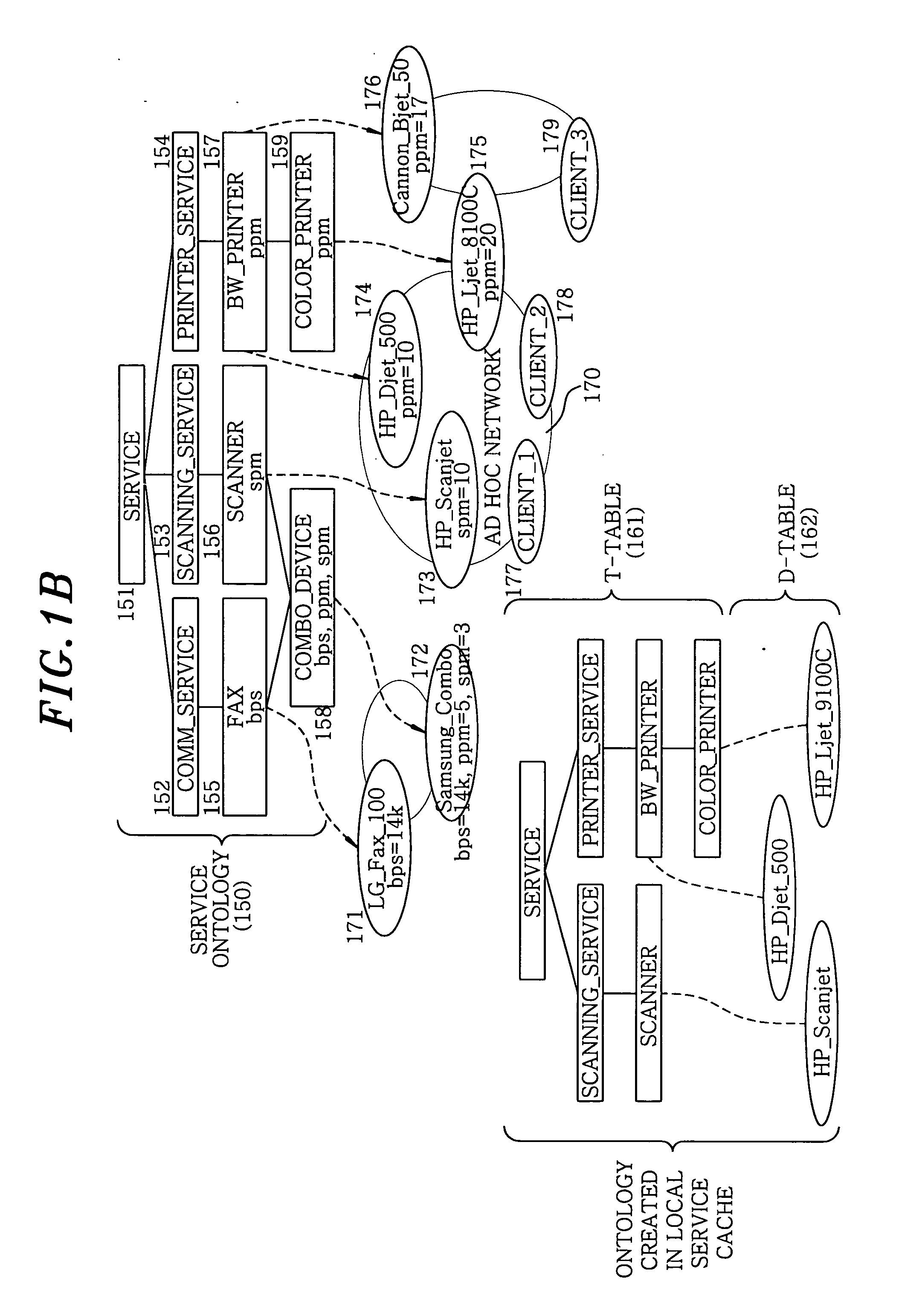Ontology-based service discovery system and method for ad hoc networks
a service discovery and service technology, applied in data switching networks, multi-programming arrangements, instruments, etc., can solve problems such as inability to discover services exactly coincident (or partially matching) with service queries, and existing service discovery techniques that are not optimized for the manet environmen
- Summary
- Abstract
- Description
- Claims
- Application Information
AI Technical Summary
Benefits of technology
Problems solved by technology
Method used
Image
Examples
Embodiment Construction
[0027] A preferred embodiment of the present invention will now be described in detail with reference to the accompanying drawings.
[0028]FIG. 1A describes a conception of an ontology-based service discovery in accordance with the preferred embodiment of the present invention.
[0029] In FIG. 1A, each of all servers 102 to 104 existing on an ad hoc network has a description of a service that can be provided by it based on a service ontology defined in advance. Further, all nodes including clients and servers have their own local service caches for storing therein the service descriptions provided from the servers on the network. Each node performs a service cache synchronization protocol with neighboring nodes, whereby the nodes on the entire network become to share their service descriptions with each other. The service descriptions stored in the local service caches are organically connected to each other, thereby constituting the service ontology.
[0030] Each client node is set to...
PUM
 Login to View More
Login to View More Abstract
Description
Claims
Application Information
 Login to View More
Login to View More - R&D
- Intellectual Property
- Life Sciences
- Materials
- Tech Scout
- Unparalleled Data Quality
- Higher Quality Content
- 60% Fewer Hallucinations
Browse by: Latest US Patents, China's latest patents, Technical Efficacy Thesaurus, Application Domain, Technology Topic, Popular Technical Reports.
© 2025 PatSnap. All rights reserved.Legal|Privacy policy|Modern Slavery Act Transparency Statement|Sitemap|About US| Contact US: help@patsnap.com



